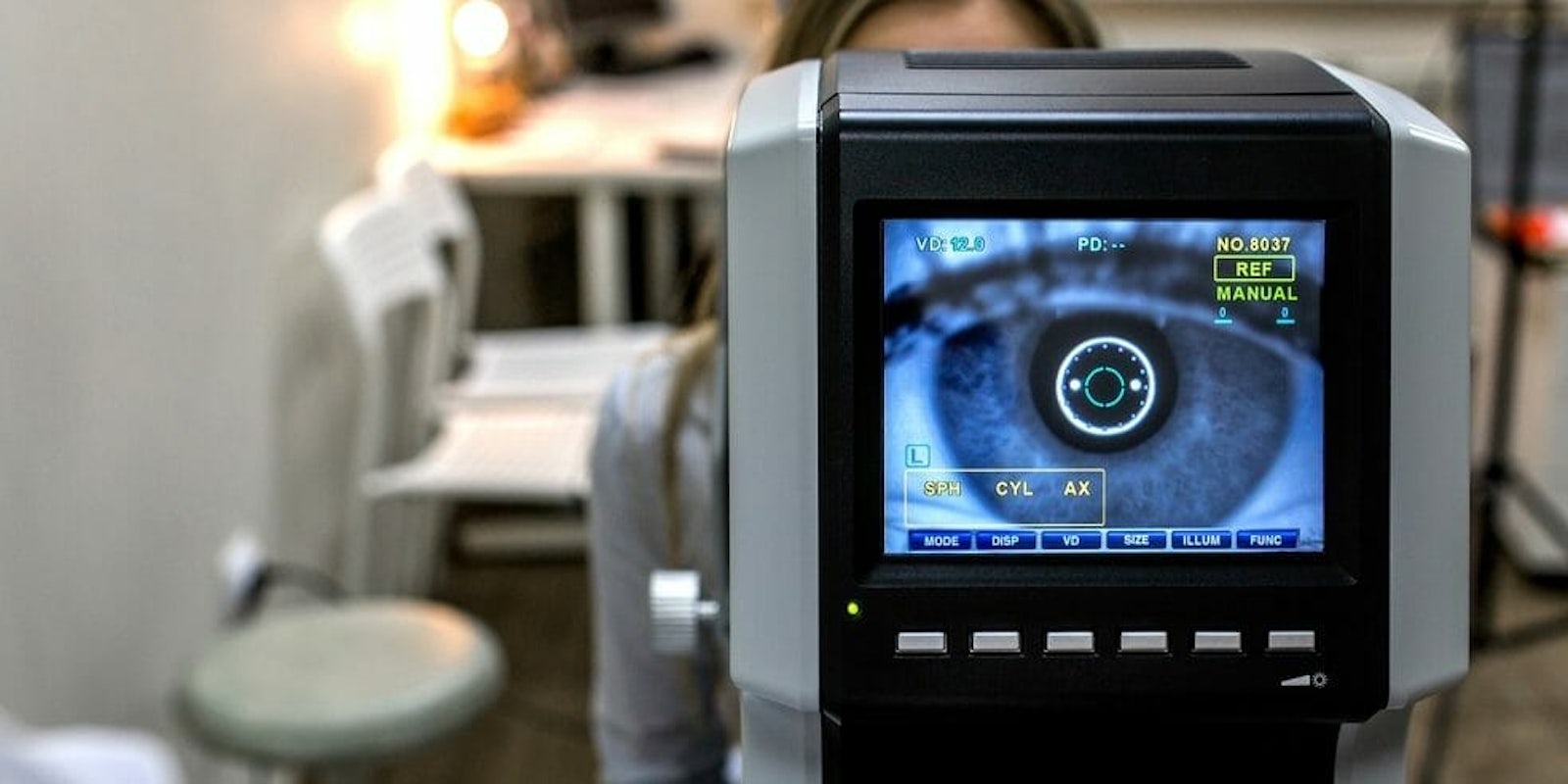You might consider downloading a smartphone app if you’re worried about your vision going bad.
Presbyopia, or farsightedness caused by the loss of elasticity in your eyes as you age, affects 83 percent of adults over the age of 45 in North America, and nearly everyone is forced to wear glasses by the time they hit 50. Combined with an increasing concern for the long-term effects of staring at a screen all day, and the future starts to look blurry. But studies show that smartphone apps may be capable of retraining your brain to improve your sight.
The New York Times spent some time with GlassesOff, the only app backed by medical studies that claims to improve eyesight. Austin Frakt, the writer of the Times report, used the app for a month. The app told him his ability to read text improved by about 33 percent by the time testing was finished.
GlassesOff uses perceptual learning to improve your vision by training your eyes to view specific images. It deploys “Gober” patches, or black, white, and, grey images to stimulate the brain so it can learn and recognize patterns. After firing up the app, users will see an extremely low contrast image with circles in the background. A pattern then flashes on the screen for a matter of milliseconds, and a second pattern flashes soon after. Users must then decide which image appeared more focused.
That may sound like those fun tests your eye-doctor gives you during a routine checkup, but this is a lot more punishing. To be effective, users must use the app hundreds of times on a daily basis, and as the Frakt points out, “Weeks into it, I began to dread the monotonous labor.”
The science behind the application isn’t much different than practicing how to hit a baseball in a batting cage. The ball shoots out of the machine, your eyes catch a glimpse of white, and your brain reacts accordingly. The more you do it, the slower that ball appears, and the better equipped you are to try a faster speed.
That brings us to the surprising science behind this app—it doesn’t help your eyes, it trains your brain. Your eyes pick up data of an image and send it to your brain where it unscrambles into recognizable objects. Our brains only have around 250 milliseconds to process words read at a normal speed. If the brain is unable to recognize a word in that time, it won’t be able to understand it. By flashing difficult-to-see images, you can speed up the time it takes for your brain to process that data and improve different parts of your vision. Some studies agree the technique can “greatly improve visual performance for older adults.”
Others are not as hopeful.
“Human vision quality is determined by the physical eye and the way the brain reads the information that the eye captures,” ophthalmologist Michelle Rhee told CBS News. “To think that we can reverse presbyopia or reverse having to wear glasses for myopia and any of those different prescriptions solely on neuroplasticity is just not accurate.”
Frakt says his vision is equivalent to someone 10 years younger than him after testing GlassesOff for just a few months.
But that alleged benefit doesn’t come cheap. The app costs $25 for three months, which is enough time to get through the main program. It costs $60 a year for “maintenance training” after that. But those charges pay for themselves in convenience and price if they can keep you from needing reading glasses sometime down the road.
H/T New York Times


